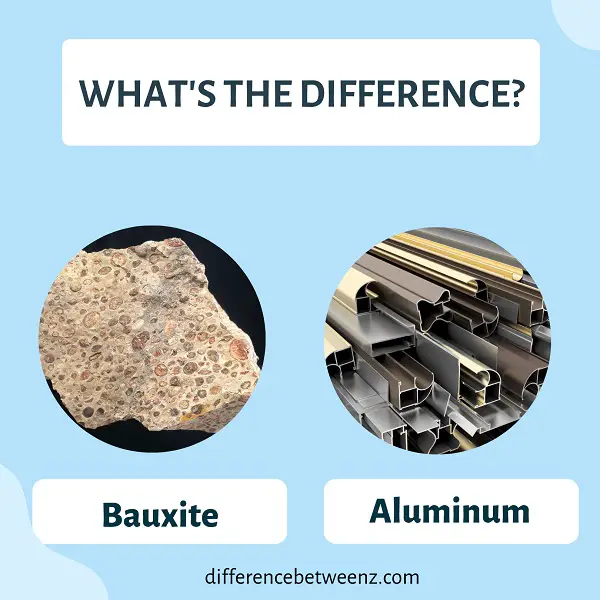Bauxite and aluminum are two different materials, but they are often confused with one another. Bauxite is the ore that is used to extract aluminum, while aluminum is the final product. This difference can be confusing for people who are not familiar with the process of extracting aluminum from bauxite. In this blog post, we will explain the difference between these two materials and discuss how bauxite is converted into aluminum.
What is Bauxite?
Bauxite is an aluminum ore that consists of a mixture of hydrated aluminum oxides, iron oxide, titanium oxide, and minerals. Bauxite is the primary source of aluminum in the world. Bauxite deposits are typically found in tropical or subtropical environments. The largest deposit of bauxite in the United States is located in Arkansas. Bauxite is mined using open-pit mining methods.
Once the bauxite is extracted from the mine, it is transported to a processing plant where it is crushed and ground into a fine powder. The powder is then mixed with water and chemicals to create a slurry that is pumped into cells where it is subjected to an electrolytic process to produce aluminum metal. Bauxite is also used in cement production, abrasives, and as a coloring agent in paints and cosmetics.
What is Aluminum?
Aluminum is a silvery-white, soft, nonmagnetic, ductile metal. Aluminum is the most abundant metal in the Earth’s crust and the third most abundant element overall. Aluminum does not occur in nature as a pure element; instead, it is found in a variety of compounds, including alumina, bauxite, and cryolite. Aluminum metal is produced by extracting aluminum from these compounds.
The earliest known production of aluminum was in France in 1854. Aluminum is used in a wide variety of products, including aircraft parts, beverage cans, cooking utensils, and automotive components. It is also used in construction and electronics. Aluminum is an excellent conductor of electricity and has a high thermal conductivity. It is lightweight and corrosion-resistant. These properties make aluminum an ideal material for many applications.
Difference between Bauxite and Aluminum
- Bauxite is a sedimentary rock that is the main source of aluminum. Bauxite contains a high amount of aluminum oxide and other minerals. Aluminum is a metal that is extracted from bauxite through the Hall-Heroult process. Bauxite is typically found in tropical or subtropical regions. Aluminum is a lightweight metal that is used in a variety of applications, including cans, foils, kitchen utensils, and window frames.
- Bauxite is mined in several countries, including Australia, Brazil, China, and Jamaica. Aluminum products are recycled and can be recycled indefinitely. Bauxite mining can have a negative impact on the environment, including loss of vegetation and soil erosion.
- Aluminum is a chemical element with the symbol Al and atomic number 13. It is a silvery-white, soft, nonmagnetic, ductile metal. Aluminum is the third most abundant element in the Earth’s crust after oxygen and silicon and the most abundant metal in the Earth’s crust. Aluminum oxide has many different names, depending on its degree of hydration. Alumina is an aluminum oxide that has been hydrated to varying degrees.
Conclusion
Although bauxite and aluminum are both made from alumina, they have different properties. Bauxite is a softer ore that needs to be processed into alumina before it can be turned into aluminum. Aluminum is a harder metal that doesn’t need to be processed as much. The difference between these two ores is what gives aluminum its strength and durability.


